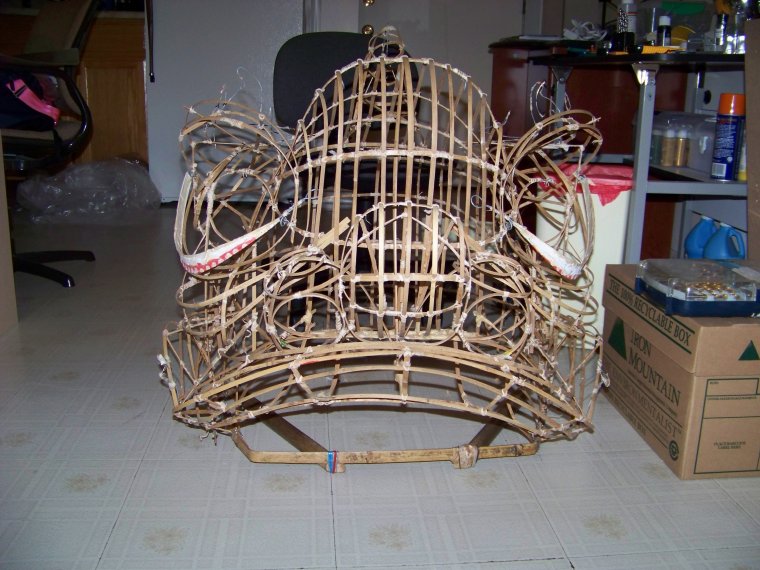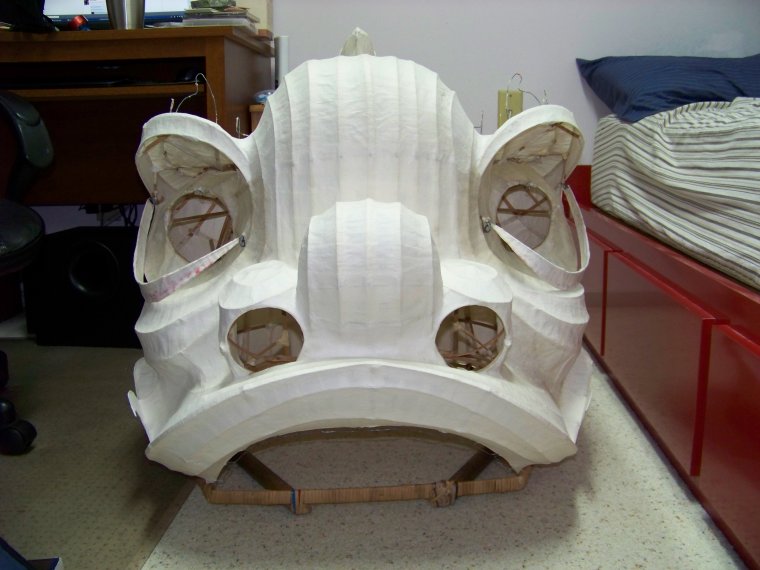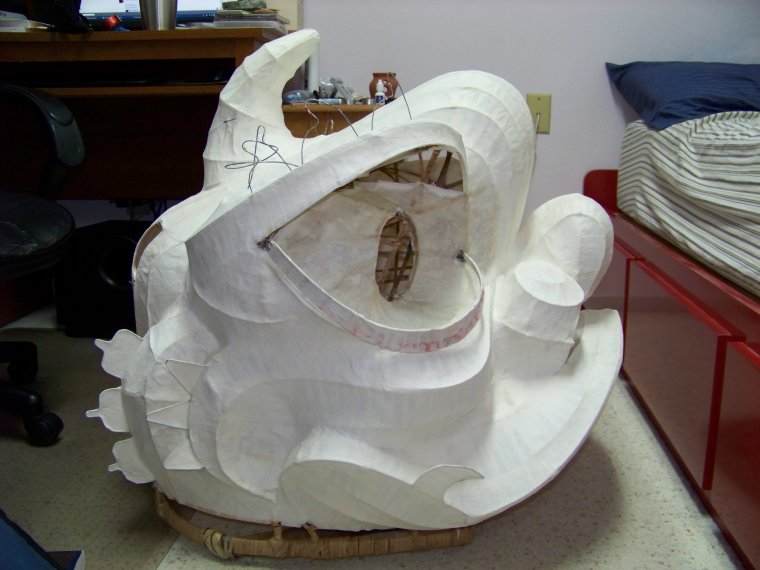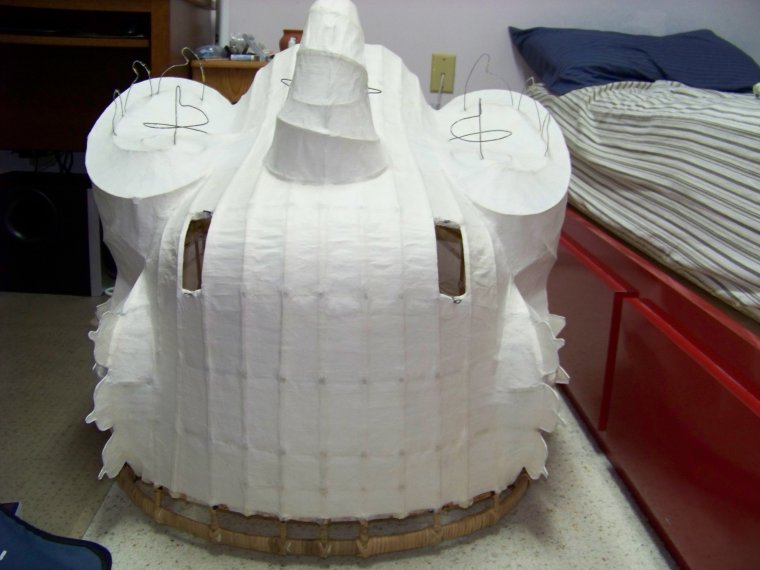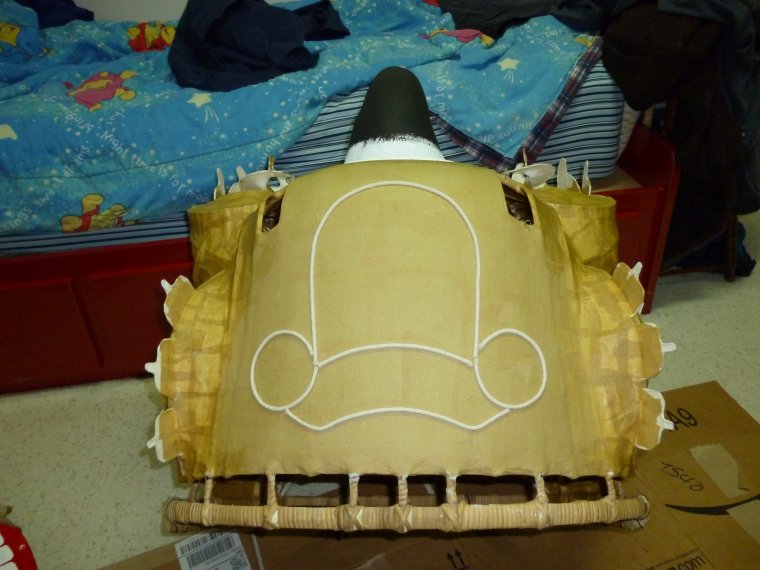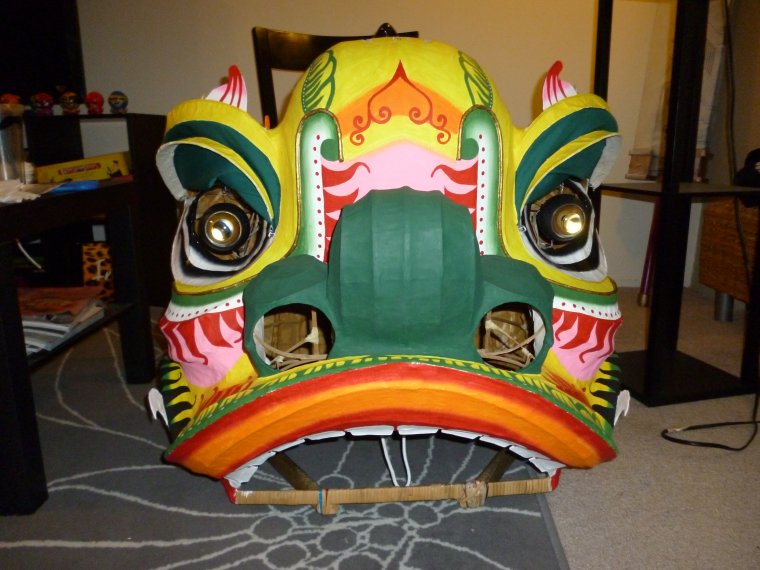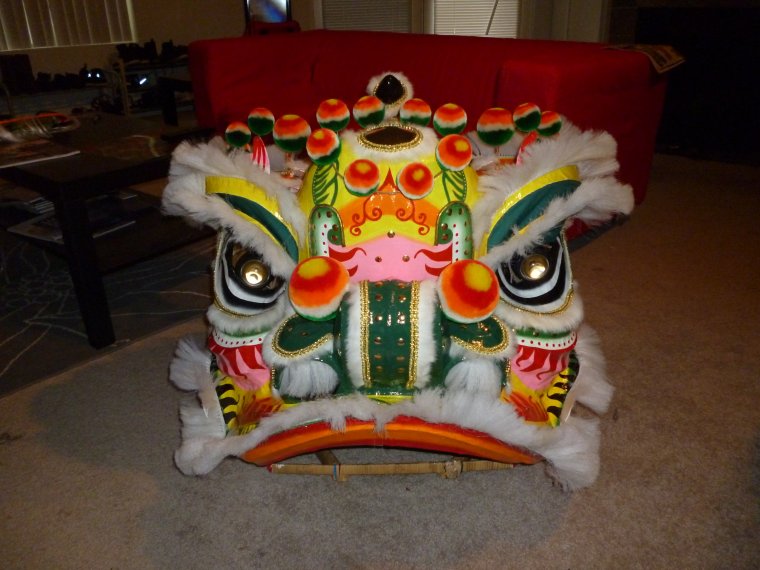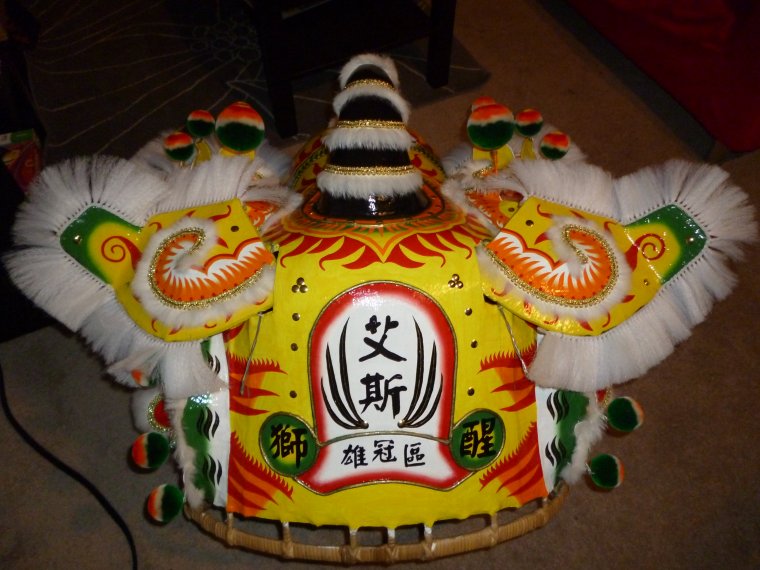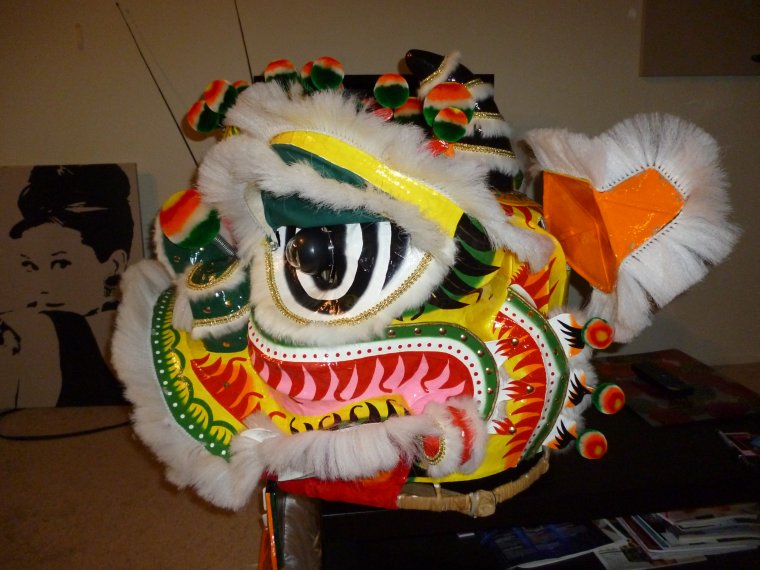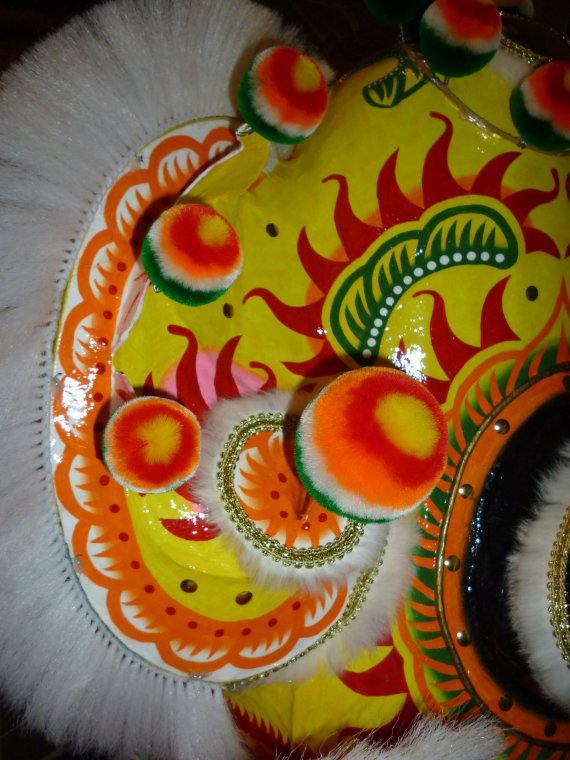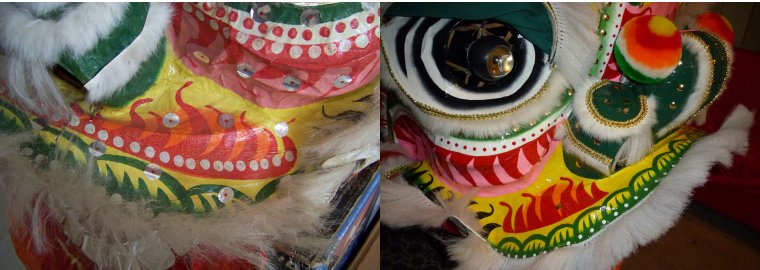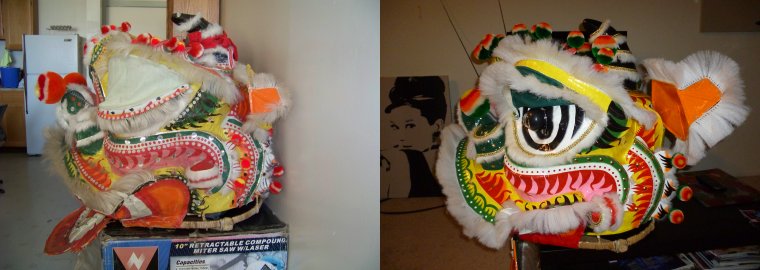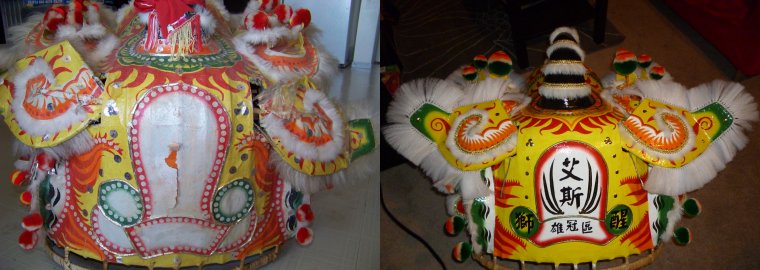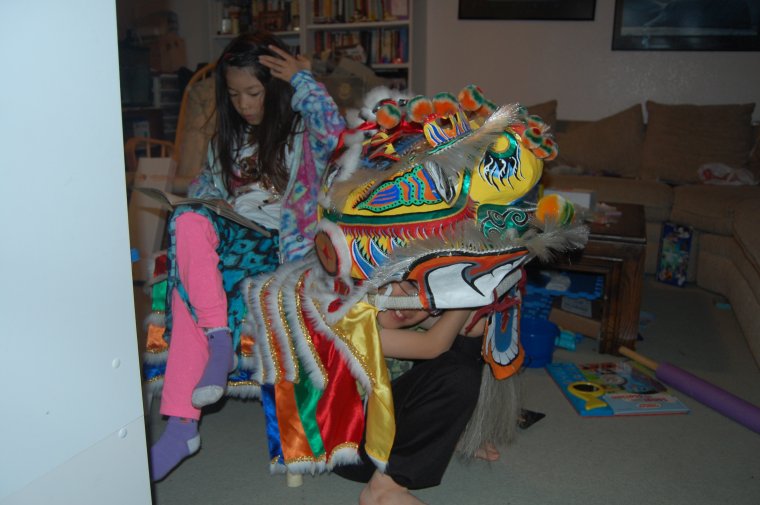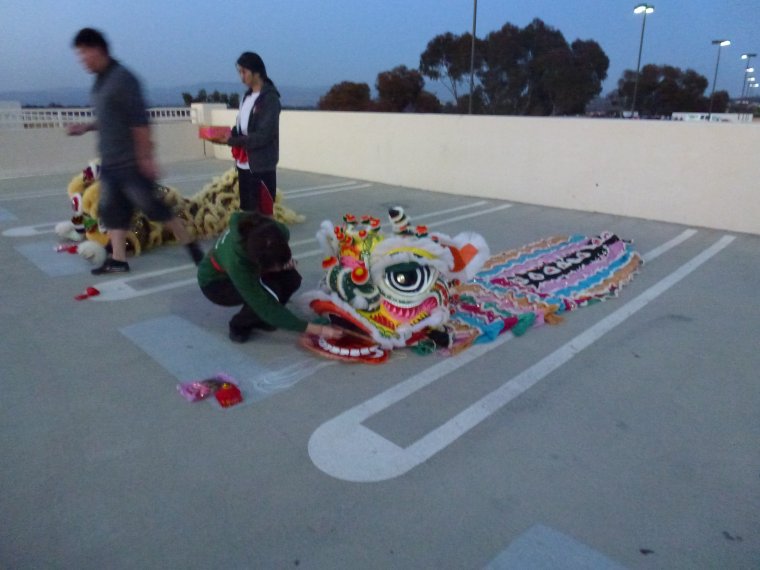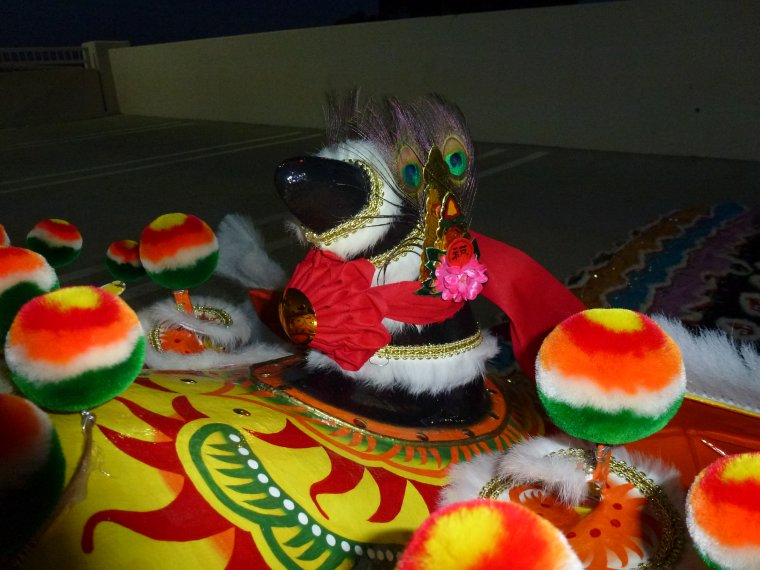Remember my friend Andy Ta, the lion dance addict? Well, he and Morris Lam (another lion dance friend) recently came back from an epic trip to Asia where they experienced all things lion dance related. They even brought back some beautiful equipment!
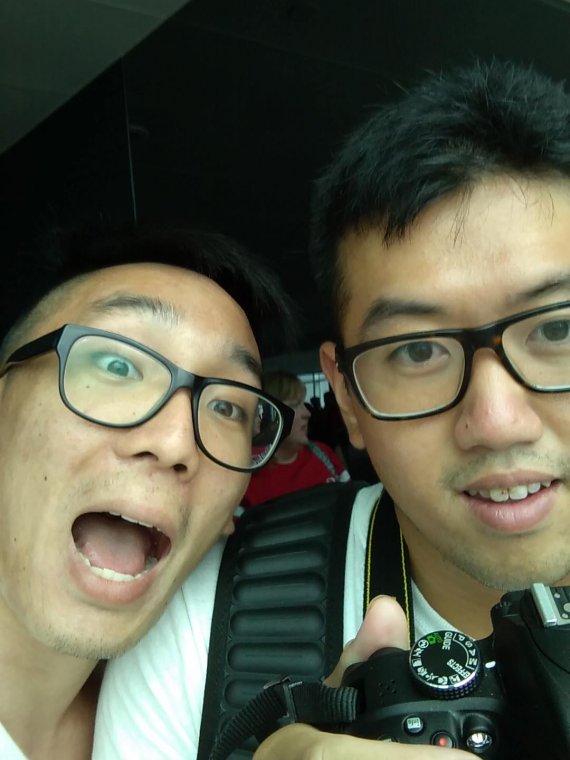
Morris and Andy
Their trip started in Vietnam, where Jow Ga lion dance is very popular. Recently, some Vietnamese-made lion heads have been starting to look more and more like the ones found in China. Before, some styles had moveable horns and other interesting features. Andy and Morris visited Quang Do, a popular lion and dragon maker in Vietnam.

Unfinished Vietnamese lion heads
They didn’t purchase any Vietnamese lions, but brought back a bunch of miscellaneous equipment like flags, banners, scrolls, uniforms, etc.
Their next destination was Singapore, where Jow Ga lion dance is also very popular along with many other styles of kung fu. Supposedly, the story is that many Chinese kung fu masters of various styles fled to different countries during the Cultural Revolution, forming many international branches. Because Andy is a Jow Ga student, he was able to visit the Zhong Wai Zhou Jia Quan Association. Only Jow Ga members are allowed inside!
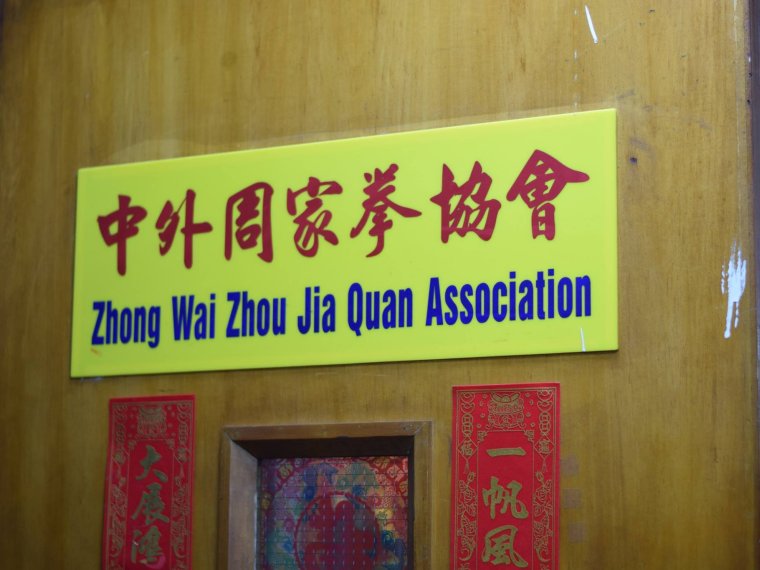
Zhong Wai Zhou Jia Quan Association
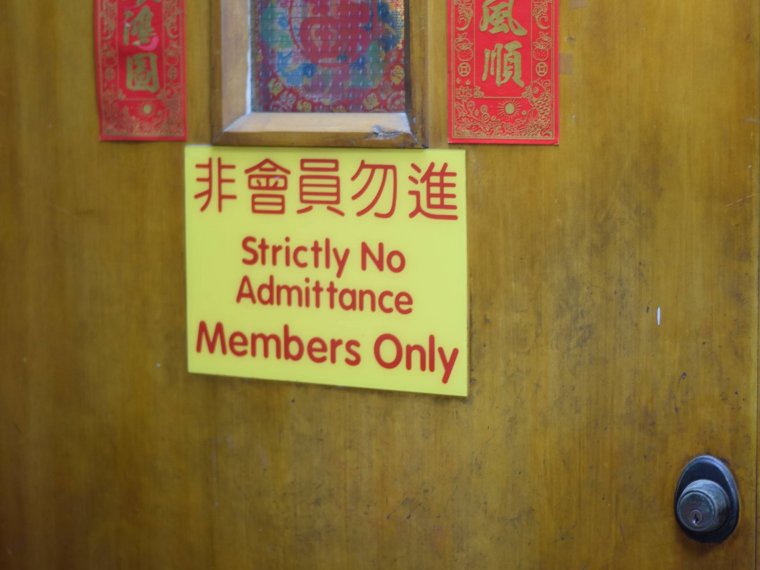
Members only!
Even though Andy is from the USA Jow Ga branch, he was very welcome in Singapore’s branch. Talk about a strongly-knit kung fu family!

Morris and Andy with important people of the Zhong Wai Zhou Jia Quan Association
Next, they went to visit Qing Wei Cultural Troupe, a lion dance team led by Leon Ng. If I’m not mistaken, he also makes lions and dragons as a side hobby. During the visit, they were preparing for a future competition.

Leon Ng
Their last destination in Singapore was Kong Chow Wui Koon, a large Chinese cultural center where they teach many different Chinese performing arts. Andy and Morris were fortunate to visit their lion dance museum thanks to Fatty Cheong (his real name is Chan Tuck Cheong), the chief instructor for lion dance and dragon dance at Kong Chow Wui Koon.

Some ornate styles of lions in Kong Chow Wui Koon
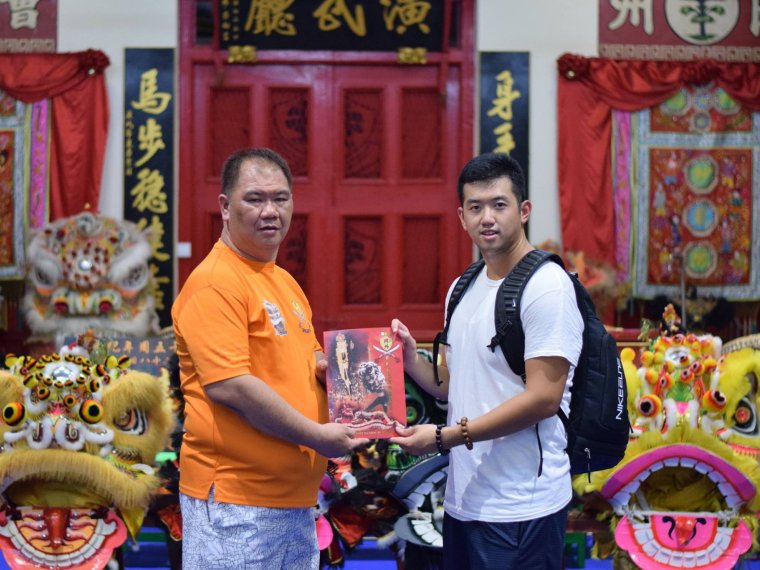
Andy and Fatty Cheong (Chan Tuck Cheong)
Interestingly enough, I remember seeing a video about Fatty Cheong on Youtube. It wasn’t about lion dance though – he makes some of the best Cha Siu in Singapore!
Their last destination was Hong Kong, where most of the excitement took place! First, I want to tell a little story about lion head craftsmen in Hong Kong. Back in the 1900’s, Hong Kong had some famous lion dance equipment companies such as Lo An Kee and Bak Wan, but they slowly withered away. It was hard to make a living by being a lion craftsman, and took many years and lots of patience to master the art. Although Lo An Kee and Bak Wan, along with many others, are not in business anymore, a few lion craftsmen have become popular in this generation. Andy and Morris were lucky to have a chance to visit some of these fine lion craftsmen in Hong Kong.
One of them is Yu Ho, who has been gaining much popularity these past few years because of his originality and creativity on traditional southern lion heads. Unfortunately, Andy didn’t purchase a lion head from Yu Ho this time because his team bought one recently. But, they did have some good conversation and Andy also picked up a discontinued style of Dai Tau Fut mask.
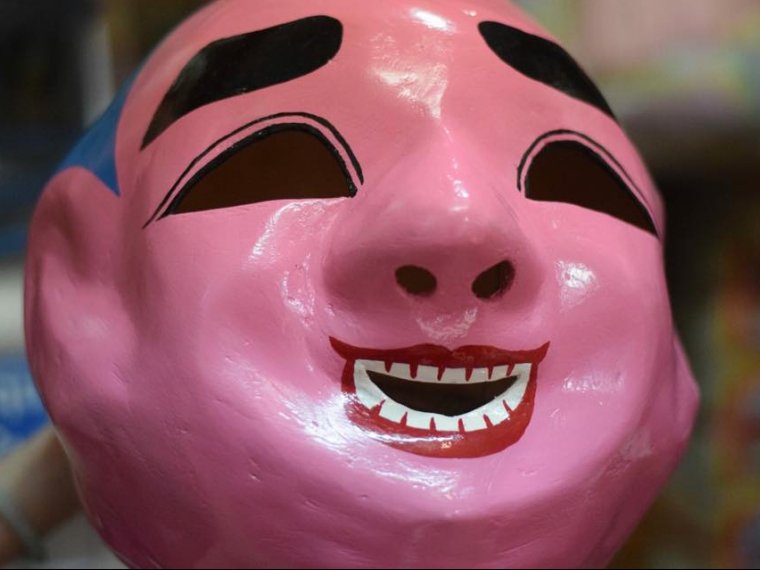
Discontinued style of Dai Tau Fut masks

Andy with Yu Ho
Because Morris is from the USA Yau Kung Moon branch, they were able to attend a banquet hosted by the Hong Kong’s Yau Kung Moon Association. There were lots of lion dance and kung fu performances. They even got to take a picture with the chairman of Yau Kung Moon Association, Ha Tak Kin.
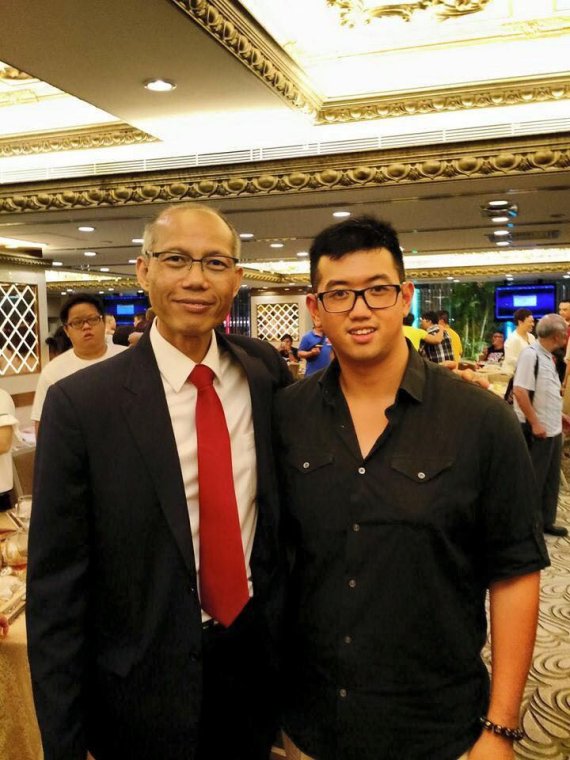
Ha Tak Kin with Andy

Morris with Ha Tak Kin
The next popular lion craftsmen are Hui Ka Hong and his teenage nephew, King Demon Lion. The company name is Hong See Lau (雄ç…樓). Andy was able to bring back a set of three lions from them, one for each of the three famous generals from the Three Kingdoms. These are some epic traditional lion heads with a modern twist.

雄ç…樓

Zhang Fei, Liu Bei, and Guan Yu

Immortals members Tommy, Elisa, and Andy with Hui Ka Hong and King Demon Lion
The next and last lion craftsman they visited was Hon Cheung Ho, also known as Hong Kong’s No Shadow Hands (香港無影手) for his drumming skills. He made a red and gold Jow Ga style lion for the Immortals.
Below is a picture showing five lion heads made by modern day Hong Kong lion craftsmen. It is definitely a rare sight to see this variety of Hong Kong lion heads all in one picture. On the left is a lion made by Yu Ho. The three lions in the middle are the three generals from the Three Kingdoms made by Hui Ka Hong. On the right is the red and gold Jow Ga lion made by Hon Cheung Ho.

From left to right: Fut San lion made by Yu Ho, Three Kingdoms’ generals made by Hui Ka Hong, and Jow Ga lion made by Hon Cheung Ho.
Before ending their time in Hong Kong, Andy and Morris watched a lion dance competition sponsored by adidas. According to Andy, this was one of the most eye-opening lion dance experiences he’s ever had. I take that back. This WHOLE trip was one of the most eye-opening lion dance experiences he’s ever had. Hopefully, I will be able to join them on their second epic trip to Asia!
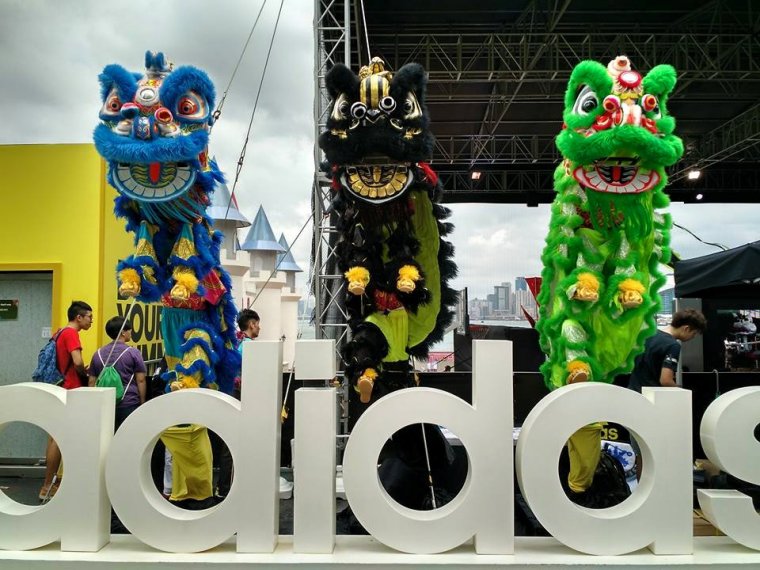
Lion dance competition sponsored by adidas
P.S. Regarding Project T7, I actually forgot to post an update after I last worked on it. Here’s a picture of what I finished last break. I couldn’t get much done because a lot of other stuff happened, but at least some people will now understand why it’s called Project T7!
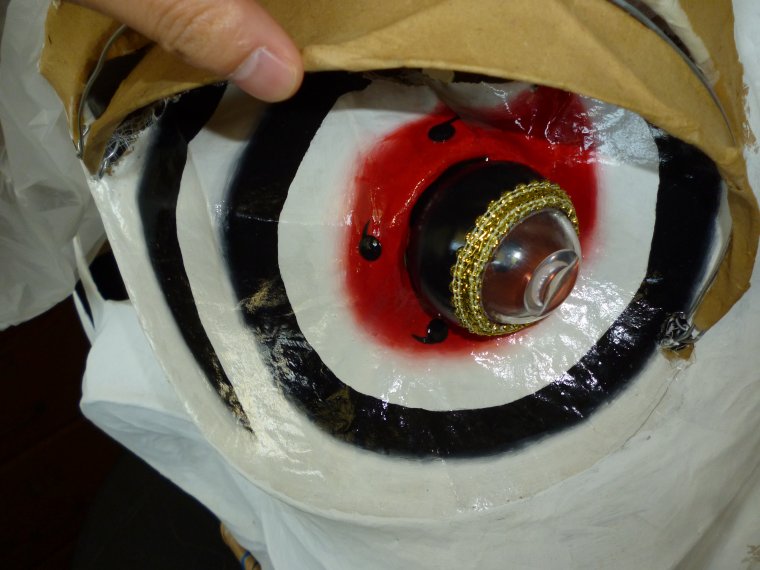
Project T7 Sharingan

Project T7 in its current state
After Andy told me about his trip to Asia (especially his experiences in Hong Kong), I had a new spark of inspiration for the art of lion making. I can’t wait to work on it again.
Until next time.

